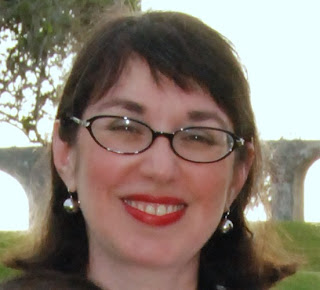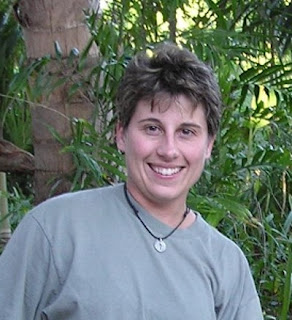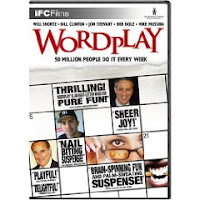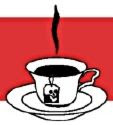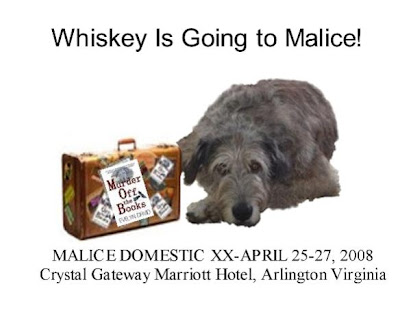
Malice Domestic XX. It’s a huge conference, but people are as friendly as they can be. Here is my “real time” diary of the event.
Part 1 – Friday
Drove down from New York this morning. Let’s say it was nobody’s finest hour. We’d put out a MySpace bulletin that Evelyn David would be bringing chocolate to Malice. About 40 minutes from the house, I asked my husband if he’d put the candy in the trunk. He assumed I had. The mystery is that we both lived to tell (and now to laugh) the tale. We zoomed back over the GW Bridge, picked up the candy, and headed back down the turnpike.
Finally arrived at the hotel and rode up in the elevator with Jim Lavene. He and his wife, Joyce, write the Peggy Lee Garden mysteries, as well as the Stock Car Racing series. They’ve got two new mysteries series about to debut. I was on a panel with them at last year’s Malice. Plus Joyce is a master gardener. I’m always impressed by authors who keep several series going at once. Carolyn Hart has three series — who else?
This evening is a lecture by the Poison Lady. I’ll be taking careful notes since poison seems like a clever murder weapon! There’s also two other programs tonight, plus a reception. Tomorrow the panels kick off at 9 and go through the Agatha awards banquet. Should be an exhausting, but fun/interesting day.
And by the way, dropped off the chocolate in the hospitality room — and it’s almost gone. Mysteries and chocolate definitely go together!
Part 2 – Friday
“It’s incredibly easy to poison somebody.”
Just came from a fabulous session by Luci Hansson Zahray, otherwise known as The Poison Lady. She’s a toxicologist who loves mysteries (reads 300 books a year!). She had lots of suggestions for how to incorporate poison into a murder mystery. For example, some plants are safe to eat in the Northern states, because of the short growing season, whereas the same type of plant is toxic in the South because of the long growing season. Toxicity increases over time — so it might be safe to ingest in May, but by August, deadly. Think of the possibilities for the clever killer who knows his poisonous plants. He declares his innocence because he ate the leaves from the same plant in his salad in the spring. Wasn’t his fault his victim died in August eating a tainted salad!
Zahray told scary stories about ricin. Derived from the castor bean, if you ground up enough beans to equal the weight of a nickel — you could kill 100,000 people.
A bit of trivia that should appear in some novel…heroin, a morphine derivative, got its name from “heroic effort against pain.”
At the opening ceremonies, I sat next to Robert Barnard, British author who flew in to conduct the interview with Peter Lovesey, who is receiving the Malice Lifetime Achievement award. I also saw Chris Grabenstein who blogged at The Stiletto Gang today; Agatha nominees Hank Ryan Philippi and Elizabeth Zelvin; and new author Rosemary Harris. I met Michael Allen Dymmock, author of the Jack Caleb/John Thinnes series.
I’m going to be broke by the time I finish buying all the books of all the authors I meet or hear this weekend. More later — two more programs tonight!
Part 3 – Saturday
Just finished attending a wonderful panel, “Cozy Up to these Sleuths: What Does a Cozy Make?” A fascinating discussion about the cozy genre with Carolyn Hart, Jane Cleland, Audrey Friend, Mary Ellen Hughes, Emilie Richards, and G.M. Malliet moderating.
Carolyn Hart was incredibly thoughtful in her response to whether she liked the term “cozy.” She said she “loathed the term” because it was originally used by Raymond Chandler as a “diss” about Agatha Christie. She prefers the term “traditional” or “classic” mystery. Carolyn explained that “I don’t write ‘cute’ mysteries. I write mysteries dealing with human emotions, dealing with right and wrong.” She added that the traditional mystery avoids gratuitous sex and violence. It’s not that those elements aren’t in the classic mystery, but it’s how they are presented. She gave as an example, Agatha Christie’ s book, “The Body in the Library.” Set in St. Mary’s Mead, a small town, and yet “if you look past its intimate setting, it’s a very grisly book.” She added “I’m very proud to be a mystery writer.”
The panel discussed the elements of a cozy mystery and suggested that these include: a closed setting, limited number of suspects, the killer knows the victim, a plausible method of murder, and forensics can be mentioned by are not intrinsic to the solution.
The panel was asked: if you were stranded on a desert island, which three mystery books would you take with you? One admitted that she wanted a book on how to build a raft! but Agatha Christie’s “Then There Were None,” was mentioned several times, as were books by Robert Parker and Josephine Tey. Got me to thinking which ones I would take…how about you?
Off to a panel on the paranormal called “Touch of Woo-Woo.”
Part 4 – Saturday
Full disclosure: I’m the wrong half of Evelyn David to be at a paranormal panel. The Southern half loves this genre. Me? I get scared by the stuff.
After this panel, though, I might pick up some of these books. The authors were hysterical. Apparently hanging out with ghosts, zombies, shape shifters, brings out the funny! All agreed that they needed some humor in their books, otherwise they’d get “bogged down.
Moderated by Maria Lima, the panelists were Lorna Barrett, Lillian Stewart Carl, Casey Daniels, Carole Nelson Douglas, and Elena Santangelo. Two of the panelists say they were attracted to the paranormal mystery because they love history. Lillian Stewart Carl described how most historians will experience an “epiphany” when they visit a historical site, “almost a haunting…that moment when you can envision exactly what happened.” It’s that perspective that motivated her to write her books. It struck me that whether it’s the paranormal or a more traditional classic mystery, we see that “aha” moment in the reveal when the hero/heroine can described exactly what happened – and why.
When asked why she included ghosts in her book, Casey Daniels had both a funny and an honest answer. She said that the ghosts in her book were used for comedic effect, but also added that she did believe in ghosts herself, so she thought it was natural to include them in a book.
All the authors insisted that the mystery cannot be solved via the paranormal, that is, that it can’t just be a magical reveal. The protagonist has to “solve” the case, even if the answer lies in the paranormal.
We wrote one paranormal short story, “I Try Not to Drive Past Cemeteries.” I wasn’t sure how to write a novel-length paranormal story — but this gave me some ideas. It’s one of the values of mystery conferences – the opportunity to explore new directions.
Part 5 – Saturday
This panel had an interesting slant — from the point of view of the villain in a mystery. It was called, Cruella de Villain: Unforgettable Killers Make Good Mysteries.
The panelists were Suzanne Aruda, Jan Burke, Ellen Byerrum, Clare Langley Hawthorne, and Roberta Iseleib. Triss Stein was the moderator.
Lots of interesting thought-provoking ideas. Jan Burke emphasized that villains need to be complex characters. She says it’s a cop-out just to have “He’s crazy,” as the motive…”the villain’s world must make sense.”
Laughed when Ellen Byerrum described taking a PI class. Said she flunked “surveillance” and had to take “remedial surveillance.”
When asked where they find ideas for their villains, Jan Burke talked about how sometimes a character “won’t get out of my head.” She also pointed out that not all first ideas are winners, but sometimes you use one and as you develop your story, a better one comes along. She suggested that it helps not to “over-direct” your creativity and sometimes ideas will develop as you let your imagination wander.
Fascinating discussion about male versus female villains. Statistics say there are fewer female serial killers — but that is changing.
Also loved the comment about the writing life by Suzanne Arruda. She said “Writing is like combing my hair. There will always be a big knot. I have to tease it out rather than rip it out.”
Part 6 – Saturday Night
Just got back from the Agatha Awards Banquet. It’s always so inspirational — and funny. The people who create fictional murder and mayhem are some of the funniest people I’ve ever seen.
Daniel Stashower was the Toastmaster. Incredibly articulate and also incredibly funny. He did a wonderful job moving the evening along – and he also won an Agatha tonight for editing “Arthur Conan Doyle: A Life in Letters.”
Elizabeth Foxwell, a mystery historian, gave a brilliant talk on the need to preserve the letters and papers of classic mystery writers of the past, as well as how to promote the genre in the future.
Peter Lovesey won the Malice Lifetime Achievement Award. Handsome and debonair, he explained that “behind every amazing man is an amazed woman.” The crowd cracked up. He then said that he wanted to give a lifetime achievement award to his amazing wife, Jacks, whom he called “my inspiration, first editor, and main reader.” He then walked off the stage, gave a hug and kiss to his wife, and handed her a jewelry box. Wow! He then came back to the stage and gave a funny and gracious acceptance speech.
Lindsey Davis was presented an award as the International Guest of Honor. It was her first time at Malice and she too had the crowd in stitches.
Finally, came the Agatha Awards. Sarah Masters won the Best Children/Young Adult Fiction; Donna Andrews won the short story award; Hank Phillippi Ryan won best first novel; and Louise Penny won best novel of the year.
Malice Domestic is a delightful mystery conference, chock full of writers, readers, editors, agents, all sharing a love for the cozy, traditional, classic mystery. It’s been great to be here. Learned alot, laughed alot, and can’t wait to come back.
Evelyn David
http://www.evelyndavid.com

